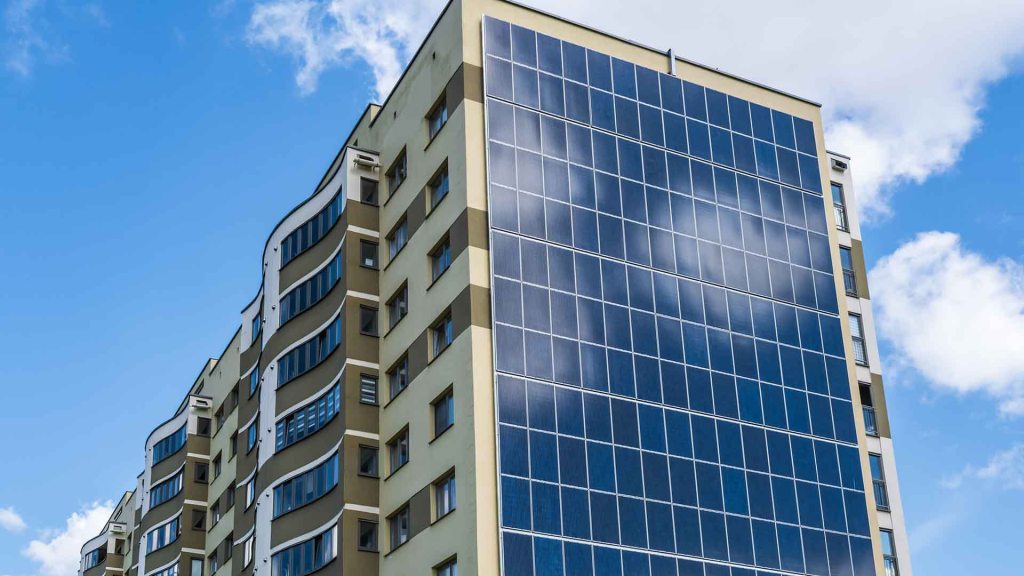In the quest for sustainable energy solutions, innovation knows no bounds. One exciting advancement in renewable energy technology is the vertical installation of solar farms on tall buildings. Imagine a future where skyscrapers not only touch the sky but also harness the power of the sun to generate clean electricity. In this blog post, we’ll explore the concept of vertical solar farms on tall buildings, uncover their benefits, and delve into the steps needed to make this eco-friendly vision a reality.
What Are Vertical Solar Farms on Tall Buildings?
Vertical solar farms on tall buildings, also known as building-integrated photovoltaics (BIPV), are a cutting-edge approach to solar energy generation. Instead of traditional rooftop solar panels or ground-mounted arrays, these systems are designed to utilize the vertical surfaces of skyscrapers, transforming them into solar power generators. This innovative approach maximizes the use of urban space and contributes to the sustainability of our cities.

The Advantages of Vertical Solar Farms on Tall Buildings:
- Space Optimization: Tall buildings often have limited horizontal space for solar installations. Vertical farms make efficient use of available vertical surfaces, allowing for greater solar capacity.
- Urban Integration: Vertical solar farms seamlessly blend with urban landscapes, reducing the need for large ground-based solar installations and preserving open spaces.
- Increased Efficiency: Vertical solar panels can capture sunlight from multiple angles, increasing energy generation throughout the day.
- Architectural Aesthetics: These solar installations can be designed to complement the building’s aesthetics, enhancing its visual appeal.
- Energy Independence: Buildings equipped with vertical solar farms can partially or completely meet their energy needs, reducing dependence on fossil fuels.
- Reduced Heat Gain: Vertical solar panels provide shading to the building, reducing heat gain and lowering cooling costs.
- Environmental Benefits: Vertical solar farms contribute to reducing greenhouse gas emissions and combatting climate change.
Key Considerations for Vertical Solar Farms:
To implement vertical solar farms successfully, several critical factors must be taken into account:
- Building Orientation: The building’s orientation and the angle of its facades affect the efficiency of solar panels. South-facing facades generally receive the most sunlight.
- Structural Integrity: The building’s structure must be assessed to ensure it can support the additional weight of solar panels and related equipment.
- Shade Analysis: Shadows cast by nearby buildings or obstacles must be considered to maximize solar exposure.
- Panel Type: High-efficiency solar panels are often preferred for vertical installations to make the most of limited space.
- Maintenance: Accessibility for maintenance and cleaning of the panels is essential to ensure optimal performance.
- Local Regulations: Compliance with local building codes and regulations governing solar installations is crucial.
The Installation Process:
Implementing vertical solar farms on tall buildings involves several key steps:
1. Assessment and Planning: Begin with a comprehensive assessment of the building’s solar potential, structural capacity, and the most suitable facades for panel installation.
2. Design and Engineering: Collaborate with architects and engineers to design an integrated system that complements the building’s design and maximizes energy generation.
3. Permitting: Obtain the necessary permits and approvals from local authorities, ensuring compliance with building codes and regulations.
4. Installation: Skilled technicians install the solar panels on the designated facades, connecting them to inverters and the building’s electrical system.
5. Monitoring and Maintenance: Implement a monitoring system to track energy generation and system performance. Regular maintenance is essential to keep the panels clean and functioning optimally.
Examples of Vertical Solar Farms:
- The Shard, London: The Shard, one of London’s iconic skyscrapers, features vertical solar panels integrated into its façade. This installation helps power the building’s lighting and heating systems.
- Bosco Verticale, Milan: This residential complex in Milan boasts lush vegetation on its balconies, as well as solar panels integrated into its design, providing both energy and greenery to its residents.
- Taipei 101, Taiwan: Taipei 101, once the world’s tallest building, features an impressive solar array on its rooftop and south-facing facades, reducing its reliance on conventional energy sources.
The Future of Vertical Solar Farms:
As cities continue to grow, the demand for clean energy sources will rise. Vertical solar farms on tall buildings offer an innovative solution to meet this demand while preserving valuable urban space. With advancements in solar technology and increased awareness of sustainability, we can expect to see more skyscrapers becoming powerhouses of renewable energy.
Vertical solar farms on tall buildings represent a remarkable leap forward in harnessing the sun’s energy in urban environments. By optimizing space, enhancing building aesthetics, and contributing to cleaner cities, this innovative approach holds immense promise for a more sustainable future.
